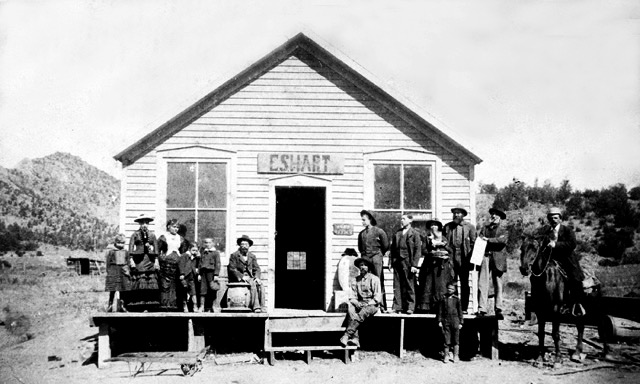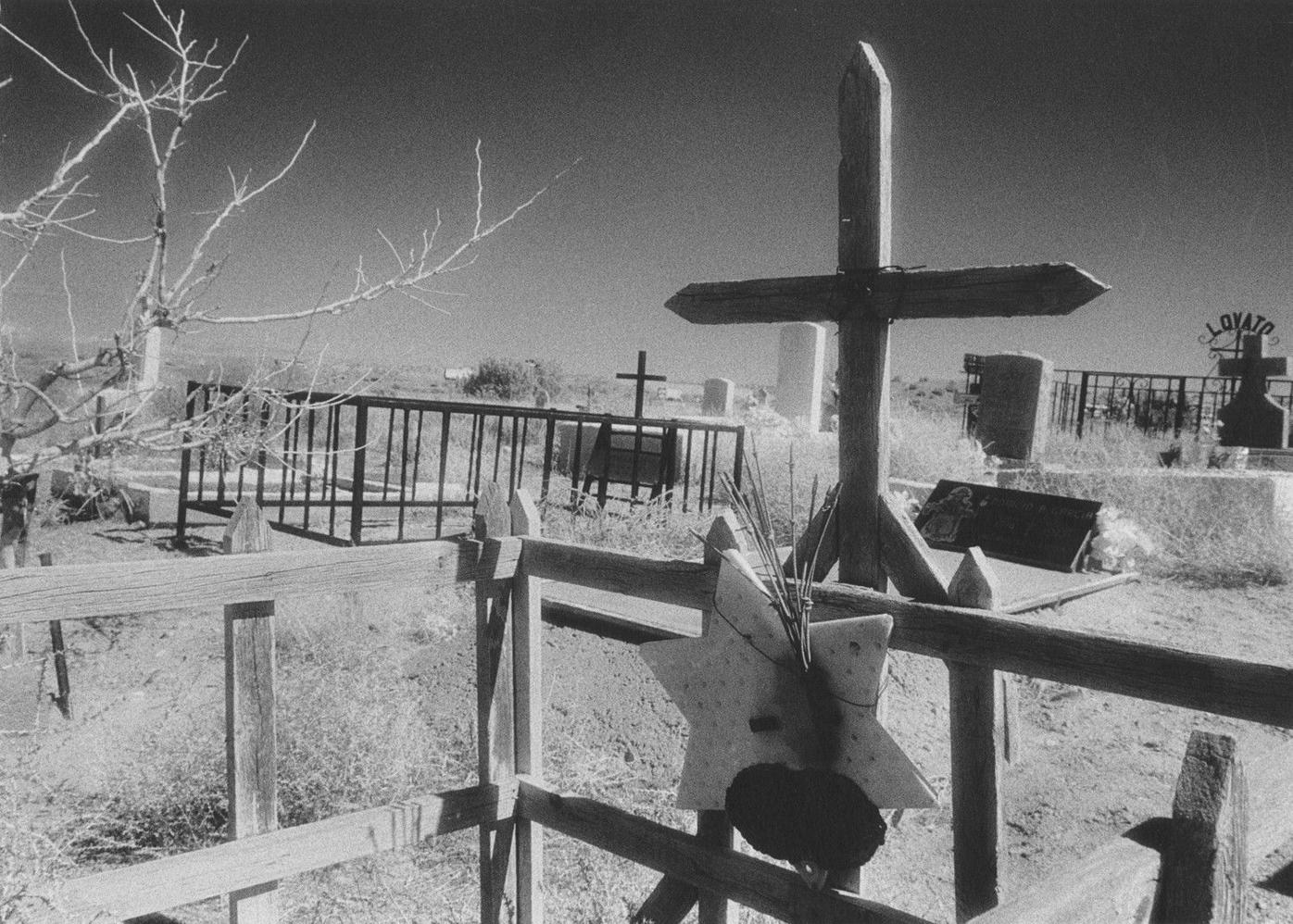|
Early Jewish Settlements in Colorado
Early Jewish settlements in Colorado such as The Atwood Colony, Cotopaxi Settlers, and Crypto-Jews of the San Luis Valley, were important settlements that helped to create strong Jewish communities throughout the State.
Early Jewish History in Colorado
Colorado had three notable early Jewish settlements. Atwood Colony and Cotopaxi were mostly settled by Russian immigrants. Recent genetic research indicates the third population, Crypto-Jews or Conversos, was settled in the San Luis Valley. Crypto-Jews were originally Sephardic Jews fleeing Spain during the Spanish Inquisition who ended up in the Southwest, i.e., New Mexico, Mexico, and Central America, and then migrated north to Southern Colorado.
The Atwood Colony
by Naomi Johnson, 2013
The first time I heard about Atwood was during a Jewish Genealogical Society of Colorado meeting several years ago. The group was asked if anyone had information they could share with the library in Sterling, Colorado about this Jewish colony that was located in Atwood, Colorado in the late 1890s. Atwood is about 120 miles northeast of Denver; 90 miles east of Greeley, or about 7 miles southwest of Sterling. It is thought that all the Jewish settlers left that area in the early 1900s due to lack of assets with which to successfully farm there.
My interest was piqued and I started to delve into researching this project through resources I could obtain through UNC’s Michener Library (where I work) and information procured from any descendants of these settlers.
My first contacts, Alan Gass of Denver and Nina Judd of Boulder provided me with many connections as well as did Jeanne Abrams and Thyria of the Jewish Historical Society at Denver University.The information comes from newspapers, books, pamphlets and from personal accounts that were either written or audio that was recorded.
I do plan to eventually visit the area and delve into documents from the Logan County Courthouse and to visit the cemetery at Atwood. It states in one of the sources that a Jewish cemetery exists behind the school house in Atwood. I do plan to eventually visit the area, and see if this cemetery still exists and to delve into documents in the Logan County Courthouse.
Since there were no formal records kept from this colony, and the personal accounts are quite contradictory, I welcome anyone with more information to send me corrections to my email and I will rectify errors or add information. Even the newspaper cannot be relied on, since one reporter erroneously calls the town “Edward” throughout the article! Early accounts say that there were about 200 settlers in Atwood, but my cumulative accounts can name only about 20. It would be wonderful to add names to the list so that more can be accounted for.
- Atwood Colony: A Historical Compilation
- Atwood Colony: Excerpts from newspapers and publications
- Atwood Colony: Historical Research
- Atwood Colony: Personal Narratives
Cotopaxi Settlement
In 1882, a large colony of immigrant Russian Jews settled in Cotopaxi, Colorado. They were misled that farming was good in the area. These individuals endured difficult hardships and the settlement lasted less than three years because it was too arid to farm. Many descendants moved on to live in other areas of Colorado, notably in Denver. A KehilaLinks page on JewishGen describes this colony in detail, including surnames.Urged by Denver Public Library Genealogy Librarian James Jeffrey, JGSCO member Ellen Shindelman Kowitt compiled a surname index based on the 1950 thesis written by Flora Jane Satt at C.U. The original, unpublished manuscript is held at the Denver Public Library Genealogy Department. A copy of the thesis and this name index containing 123 unique individuals are also available at the JGSCO library at Congregation Emanuel. A webpage about the Russian Jewish Colony in Cotopaxi created by Nelson Moore has the partial text of Flora Jane Satt's unpublished thesis "The Cotopaxi Colony" online. There are also a number of photographs and general information about the settlement.
 Crypto-Jews in Southern Colorado
Crypto-Jews in Southern Colorado
When Jews were expelled from Spain during the Inquisition in the mid 1400’s, many fled to Portugal, central Europe, east to the “New World” of Mexico, and Central & South America. Around 1571 the Spanish Inquisition came to the Americas. Many Crypto-Jews, as they are now called, moved to the northern reaches of the Spanish Empire, into what is now northern New Mexico and southern Colorado, to get as far away as possible from continued persecution. According to records from the Inquisition in the Americas ,the first official expedition into what is now New Mexico was in 1598. These records included many what we now call “Anusim”, “Conversos,” or “Crypto-Jews.”
Once part of the New Mexico Territory, the San Luis Valley in southern Colorado lies between two mountain ranges, the San Juans to the west and the Sangre de Cristos to the east. The town of San Luis, the oldest in Colorado, is the Spanish heart of the valley.
In early 2000’s, geneticists found women who had a specific breast cancer gene provided evidence of shared DNA segments between Sephardic Jews and Spanish Americans from Colorado and New Mexico. They also found DNA evidence of individuals in the San Luis Valley and in New Mexico are shared by individuals who live in Loja Province of southern Ecuador. They calculated Jewish ancestry among the Lojanos at 5-10%, and among the Spanish Americans, or Hispanics, at 1-5%. Scientists estimate that the mutation in the breast cancer gene arose over 2000 years ago among the Hebrew tribes of Israel prior to any split between Ashkenazim and Sephardim.
References:
Jacobs, M “Deep in Colorado, a lost valley of Jews” JC News, Feb. 2012. accessed; 04 July 2021, <https://www.thejc.com/news/world/deep-in-colorado-a-lost-valley-of-jews-1.31878>
Lowers, M “Crypto Jews of southern Colorado and northern New Mexico” Crestone Eagle, Feb. 2016. accessed 02 July 2021.
Mejia, J A book review of “Portal of Light” by Anthony Garcia. Lavoz Colorado, July 2015. accessed 04 July 2021.
Spence, M “Arts Center Study Focuses on Crypto-Jews in the San Luis Valley” The Pueblo Chieftan, March 2019. accessed 03 July 2021.
Wheelwright, J “The Secret Jews of San Luis Valley” Smithsonian Magazine, Oct. 2008. accessed 04 July 2021.
“Crypto-Jews in the Southwest Find a Faith in a Shrouded Legacy. CPR Feb. 2014. accessed 02 July 2021, <https://www.cpr.org/2014/02/19/crypto-jews-in-the-southwest-find-faith-in-a-shrouded-legacy/>
Resources
Association of Crypto-Jews
Corinne Joy Brown - Denver native who loves history, especially the American West, the story of the Jewish people, and the cultures of the greater Southwest
Crypto Jewish Links
Genie Milgrom, author, Crypto-Judaic studies
Society for Crypto-Judaic Studies
SephardicGEN Resources
Anusim, plural for anús, means forced ones in Hebrew. This is a legal terminology applied to a Jew who has been forced to abandon Judaism against his or her will, and who does whatever is in his or her power to continue practicing Judaism under the forced condition. It derives from the Talmudic term aberá be'ones [TB: Abodá Zará 54a], meaning "a forced transgression". The term is essentially a question of status based on observance of Jewish Law.
Converso (Spanish and Portuguese for "a convert", from Latin conversus, "converted, turned around"), and its feminine form conversa, referred to Jews or Muslims or the descendants of Jews or Muslims who had converted to Catholicism in Spain and Portugal, particularly during the 14th century and 15th century. They were also called called New Christians. In the minds of many churchmen and Christians, conversos were still identified as Jews because they typically continued to live in Jewish communities and practice occupations associated with Jews.
Crypto-Judaism is the secret adherence to Judaism while publicly professing to be of another faith; people who practice Crypto-Judaism are referred to as "Crypto-Jews". The term Crypto-Jew is also used to describe descendants of Jews who still (generally secretly) maintain some Jewish traditions, often while adhering to other faiths, most commonly Catholicism. Found in Mexico, the American southwest, the Caribbean, and South America.
Marrano is a derogatory term used to refer to Jews who converted to Christianity to escape persecution but continued to practice Judaism in secret.
Preserve Jewish Heritage — Join and Support Our Mission
As technology advances, so does our ability to trace Jewish ancestry across generations and continents. Our nonprofit Jewish genealogy organization in Colorado is dedicated to helping individuals explore, document, and preserve their family stories — stories that might otherwise be lost.
Your membership and donations make this work possible. Together, we can connect families, honor our ancestors, and strengthen our shared heritage.
Join us today or make a tax-deductible contribution to help continue this vital mission of Jewish genealogical discovery.
